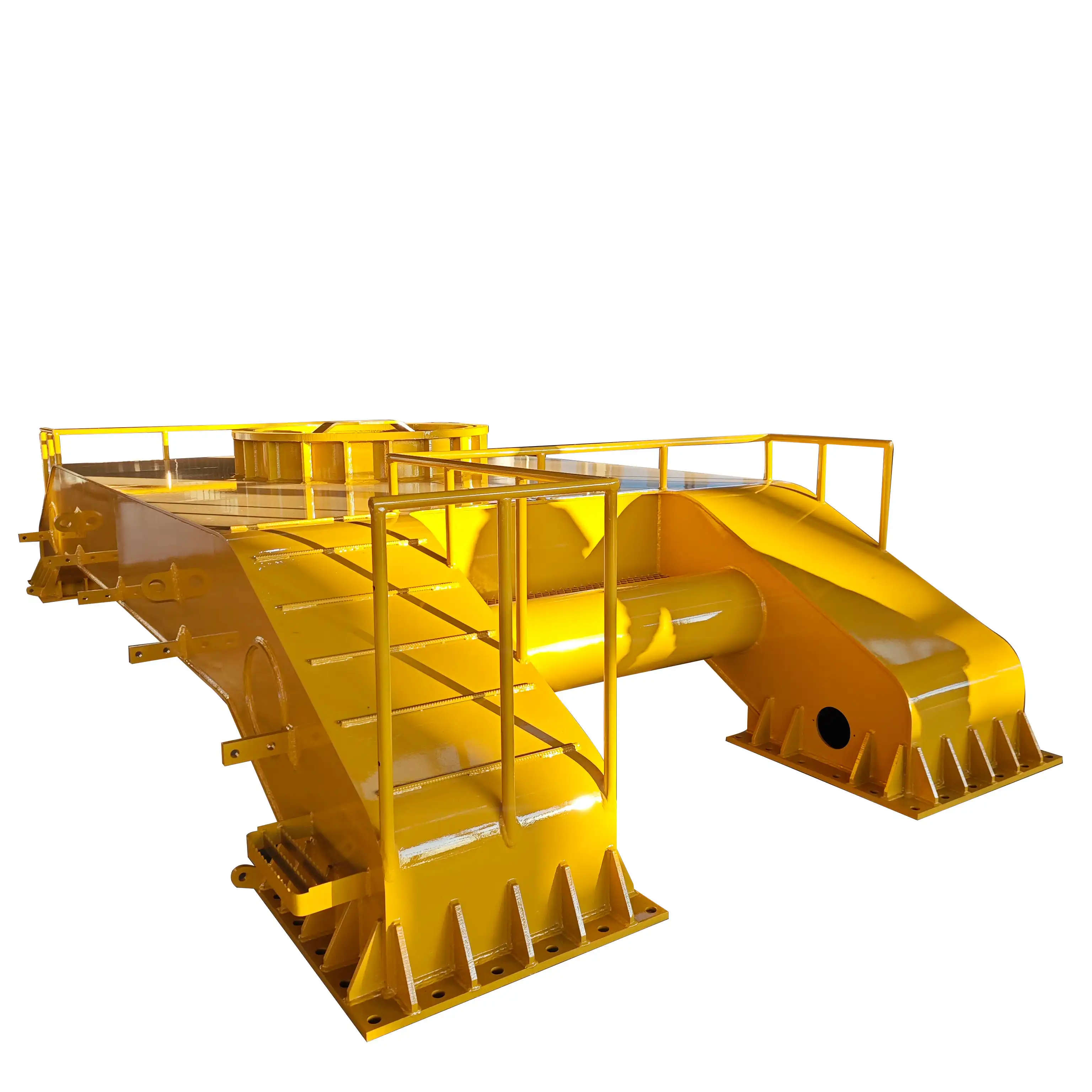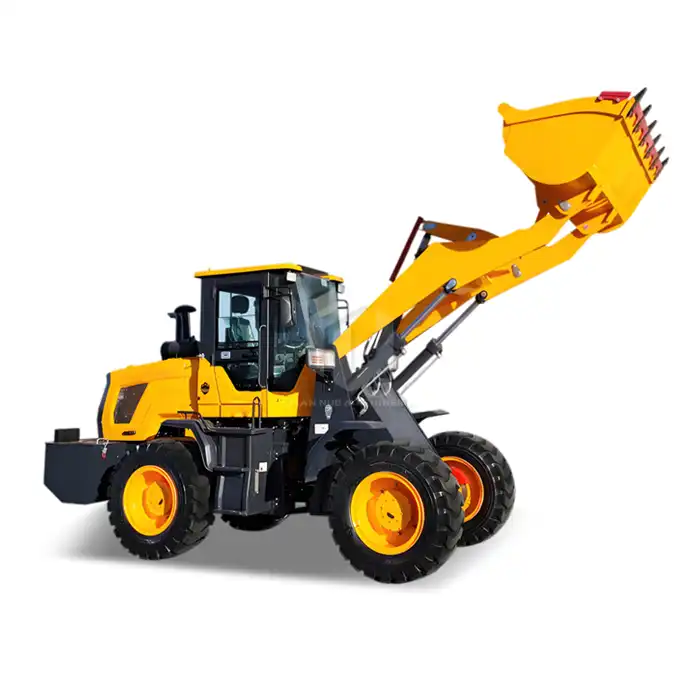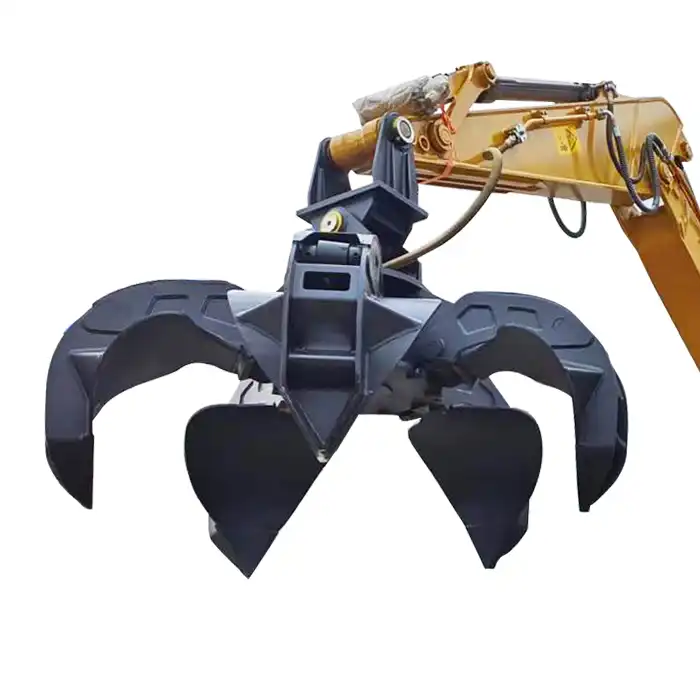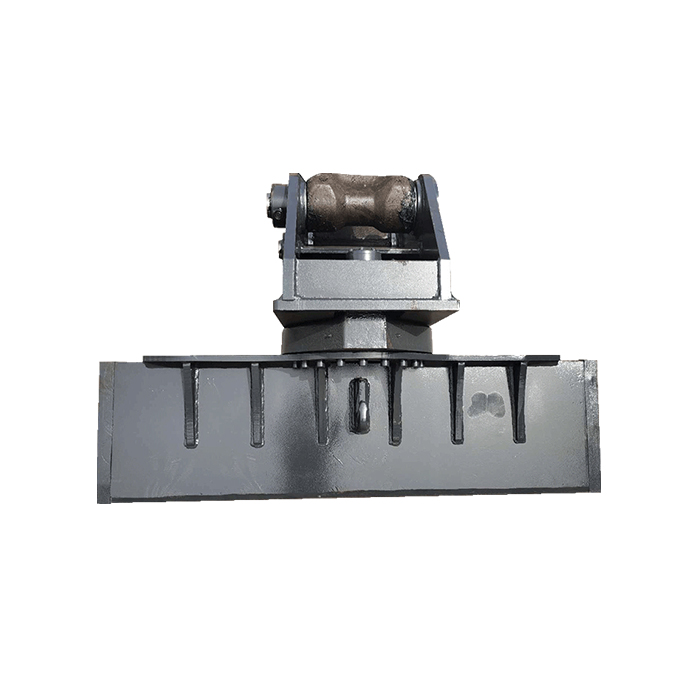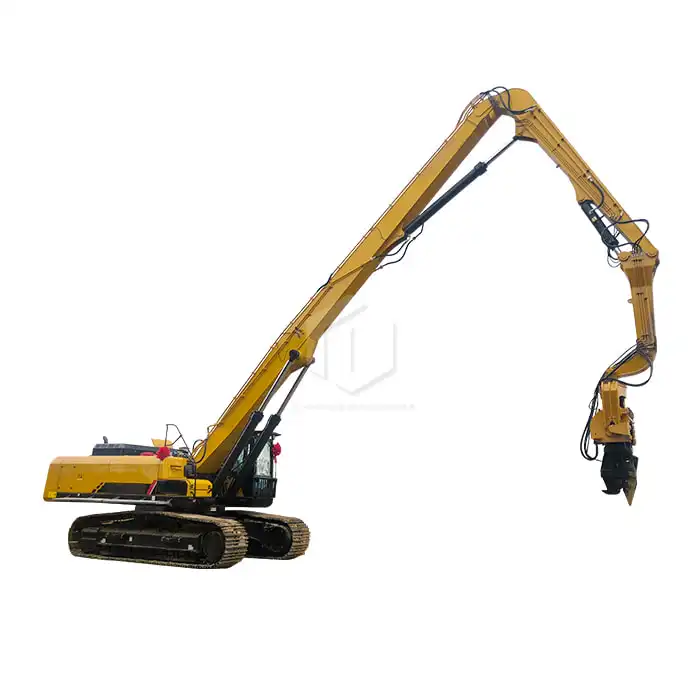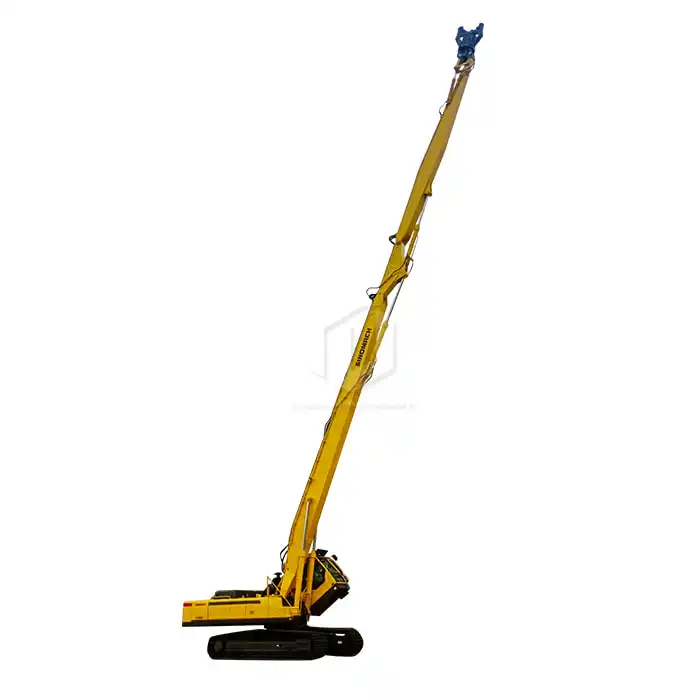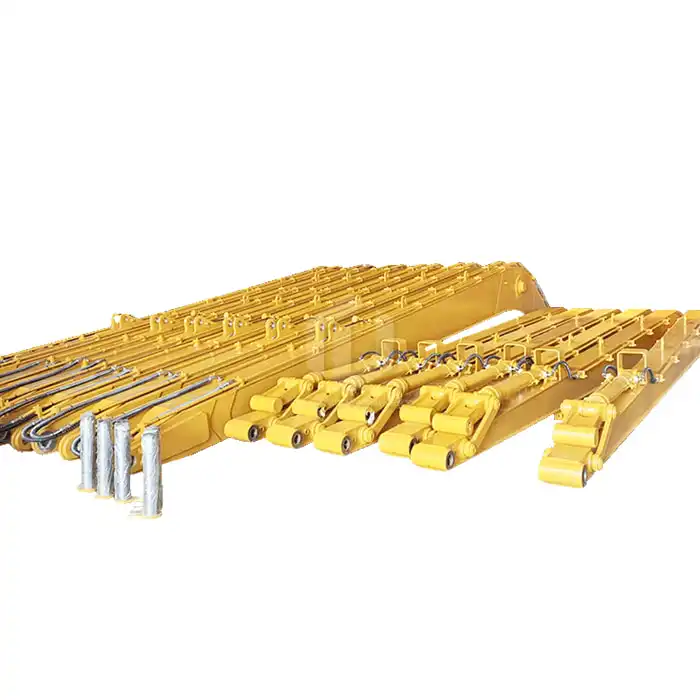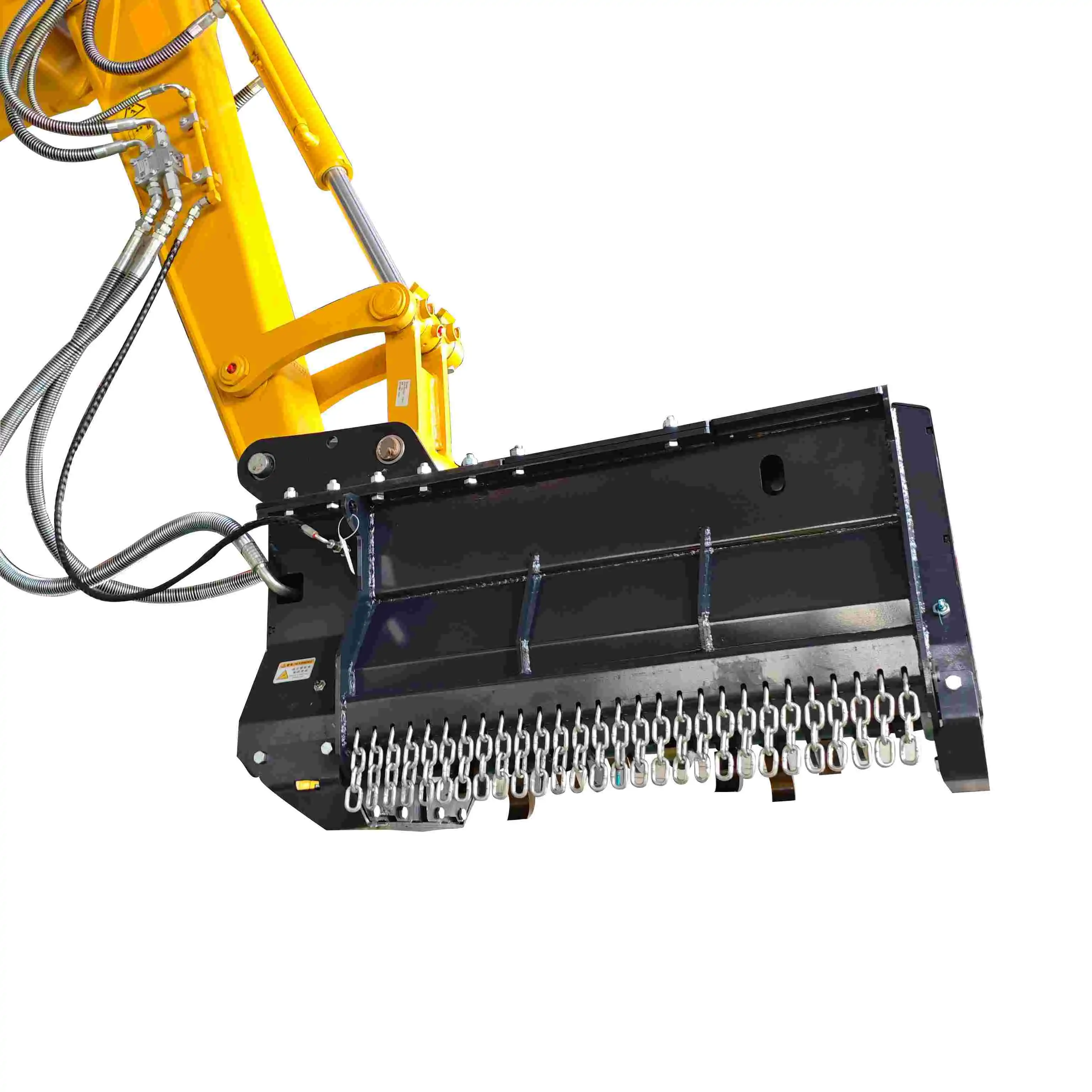How does hammer mass affect the performance of an excavator vibratory compactor?
Excavator vibratory compactors are essential tools in construction and earthwork projects, playing a crucial role in soil compaction. One of the key factors that influence the performance of these machines is the hammer mass. Understanding how hammer mass affects compactor performance is vital for optimizing soil compaction and ensuring project success. In this comprehensive guide, we'll explore the relationship between hammer mass and compactor efficiency, discuss optimal hammer mass for different soil types, and examine the impact of excessive hammer mass on both soil and equipment.
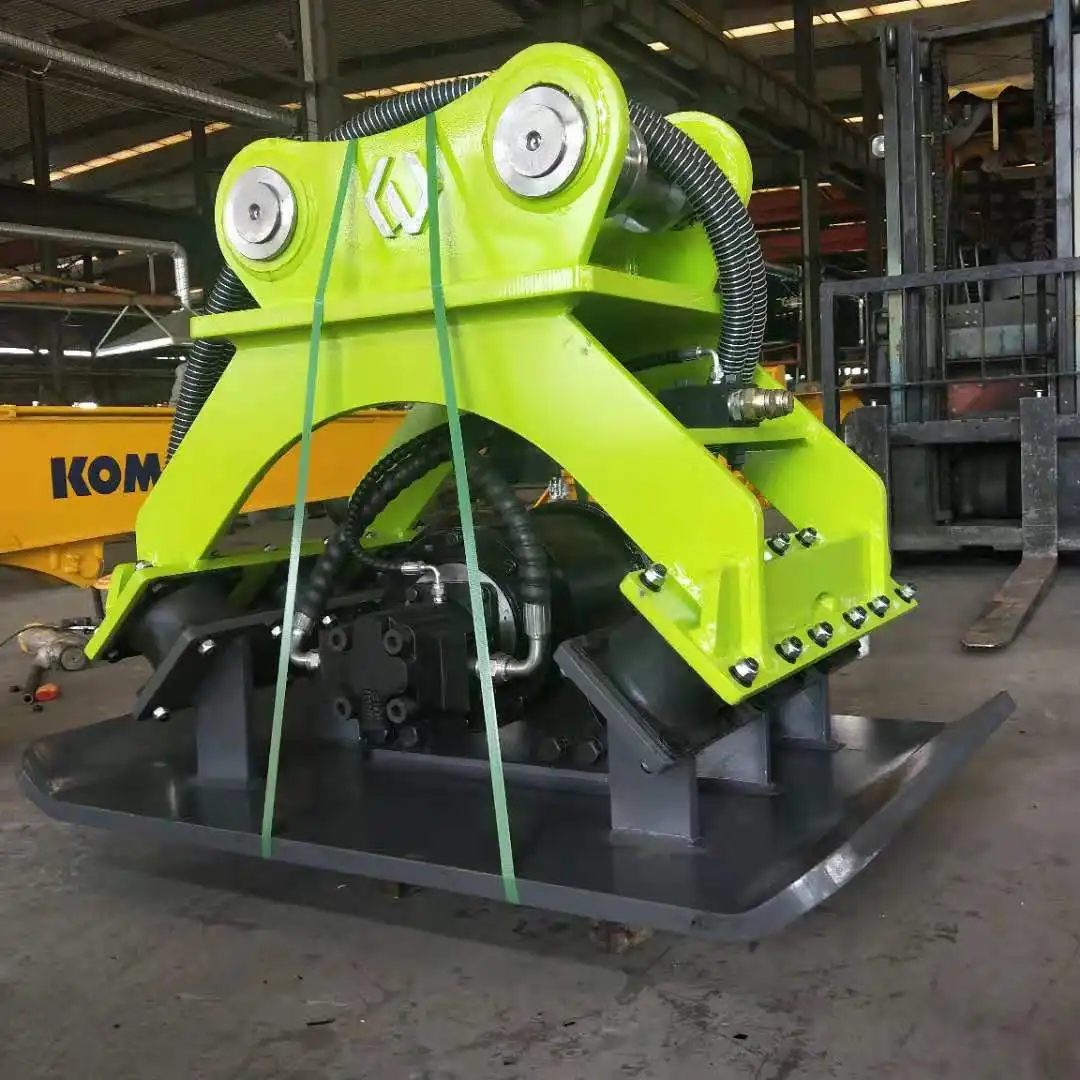
What is the optimal hammer mass for different soil types?
The optimal hammer mass for an excavator vibratory compactor varies depending on the soil type being compacted. Different soil compositions require specific levels of force and frequency to achieve optimal compaction. Let's examine the ideal hammer mass for various soil types:
1. Granular Soils (Sand and Gravel): For granular soils, a relatively lighter hammer mass is often sufficient. These soils typically require higher frequency vibrations rather than excessive weight. A hammer mass ranging from 1,500 to 2,500 kg is generally effective for compacting sand and gravel. The lighter mass allows for quicker vibrations, which help rearrange soil particles more efficiently.
2. Cohesive Soils (Clay and Silt): Cohesive soils require a heavier hammer mass to overcome the binding forces between soil particles. For clay and silt, a hammer mass between 2,500 to 4,000 kg is often recommended. The increased weight helps break down clumps and reduce air voids in the soil structure.
3. Mixed Soils: For soils with a mixture of granular and cohesive materials, a medium-range hammer mass of 2,000 to 3,000 kg usually provides a good balance. This weight allows for effective compaction of both soil types without overcompacting or undercompacting either component.
4. Rock Fill: When compacting rock fill or very coarse materials, a heavier hammer mass is necessary. Hammer masses ranging from 3,500 to 5,000 kg or more may be required to effectively compact these materials and achieve the desired density.
It's important to note that these ranges are general guidelines, and the optimal hammer mass may vary based on specific project requirements, soil moisture content, and desired compaction levels. Soil testing and on-site trials can help determine the most effective hammer mass for a particular project.
How does excessive hammer mass impact soil and equipment?
While adequate hammer mass is crucial for effective soil compaction, excessive mass can lead to several negative consequences for both the soil being compacted and the equipment itself:
Impacts on Soil:
1. Overcompaction: Excessive hammer mass can lead to overcompaction of soil, especially in granular materials. This can result in a densely packed layer that inhibits proper drainage and reduces soil permeability.
2. Soil Structure Damage: Too much weight can crush soil particles, altering the soil's natural structure and potentially reducing its long-term stability.
3. Uneven Compaction: Overly heavy hammers may cause uneven compaction, creating areas of high density surrounded by less compacted zones, which can lead to settlement issues over time.
4. Reduced Soil Strength: In some cases, excessive compaction can actually decrease the soil's shear strength, compromising its load-bearing capacity.
Impacts on Equipment:
1. Increased Wear and Tear: Heavier hammer masses put more stress on the excavator vibratory compactor's components, leading to accelerated wear on bearings, seals, and vibration mechanisms.
2. Higher Fuel Consumption: Operating with an unnecessarily heavy hammer increases the machine's power requirements, resulting in higher fuel consumption and operating costs.
3. Reduced Maneuverability: Excessive weight can make the equipment less maneuverable, potentially slowing down operations and reducing overall productivity.
4. Increased Risk of Equipment Damage: The added stress from an overly heavy hammer can increase the risk of equipment failure or damage, particularly in challenging terrain or when compacting harder materials.
5. Operator Fatigue: Heavier equipment can lead to increased operator fatigue, potentially impacting safety and productivity on the job site.
To avoid these negative impacts, it's crucial to select an excavator vibratory compactor with an appropriate hammer mass for the specific soil type and project requirements. Regular monitoring and adjustment of compaction parameters can help prevent overcompaction and equipment strain.
How to balance hammer mass and project requirements?
Achieving the right balance between hammer mass and project requirements is essential for optimal soil compaction and equipment efficiency. Here are some strategies to help you find the perfect equilibrium:
1. Conduct Thorough Site Investigation: Before selecting an excavator vibratory compactor, perform a comprehensive site investigation to determine soil types, moisture content, and desired compaction levels. This information will guide your choice of hammer mass.
2. Use Adjustable Frequency Compactors: Consider using excavator vibratory compactors with adjustable frequency settings. This allows you to fine-tune the compaction force without relying solely on hammer mass, providing greater versatility across different soil types.
3. Implement Intelligent Compaction Systems: Utilize intelligent compaction technologies that provide real-time feedback on soil density and stiffness. These systems can help operators adjust compaction parameters on the fly, ensuring optimal results without overcompacting.
4. Consider Multi-Purpose Attachments: For projects with varying soil types, consider using multi-purpose compactor attachments that allow for quick changes in hammer mass or compaction force. This flexibility can help you adapt to different soil conditions without the need for multiple specialized machines.
5. Perform On-Site Trials: Before commencing full-scale operations, conduct on-site trials with different hammer masses to determine the most effective configuration for your specific project conditions.
6. Monitor Compaction Progress: Regularly monitor compaction progress using methods such as nuclear density tests or dynamic cone penetrometer tests. This data can help you adjust hammer mass or compaction techniques as needed throughout the project.
7. Consider Layer Thickness: Adjust the thickness of soil layers being compacted based on the available hammer mass. Thinner layers may be necessary when using lighter hammers, while heavier hammers can effectively compact thicker layers.
8. Balance Productivity and Quality: While heavier hammer masses may achieve desired compaction levels more quickly, they may not always provide the best quality results. Strike a balance between productivity and compaction quality to meet project specifications efficiently.
9. Account for Environmental Factors: Consider environmental factors such as temperature and moisture content when selecting hammer mass. These variables can affect soil behavior and may require adjustments to compaction techniques.
10. Consult with Experts: When in doubt, consult with geotechnical engineers or equipment specialists to determine the optimal hammer mass for your specific project requirements. Their expertise can help you avoid potential issues and optimize your compaction process.
By carefully considering these factors and strategies, you can effectively balance hammer mass with project requirements, ensuring efficient and high-quality soil compaction while minimizing equipment wear and operational costs.
Excavator Vibratory Compactor Supplier
Understanding the complex relationship between hammer mass and excavator vibratory compactor performance is crucial for achieving optimal soil compaction results. By carefully considering soil types, project requirements, and potential impacts on both soil and equipment, construction professionals can select the most appropriate hammer mass for their specific needs. Remember that while hammer mass is an important factor, it's just one piece of the puzzle in achieving efficient and effective soil compaction.
At Tiannuo Machinery, we bring over 10 years of expertise in manufacturing high-quality excavator vibratory compactors. As a leading name in the construction equipment industry, we are committed to innovation, reliability, and customer satisfaction. If you are choosing your excavator vibratory compactor manufacturer, welcome to contact Our manager's email is arm@stnd-machinery.com and the team's emails are rich@stnd-machinery.com and tn@stnd-machinery.com.
Reference:
[1] Anderegg, R., & Kaufmann, K. (2004). Intelligent Compaction with Vibratory Rollers: Feedback Control Systems in Automatic Compaction and Compaction Control. Transportation Research Record, 1868(1), 124-134.
[2] Mooney, M. A., & Rinehart, R. V. (2007). Field Monitoring of Roller Vibration during Compaction of Subgrade Soil. Journal of Geotechnical and Geoenvironmental Engineering, 133(3), 257-265.
[3] Adam, D., & Kopf, F. (2004). Operational devices for compaction optimization and quality control (Continuous Compaction Control & Light Falling Weight Device). In Proceedings of the International Seminar on Geotechnics in Pavement and Railway Design and Construction (pp. 97-106).

